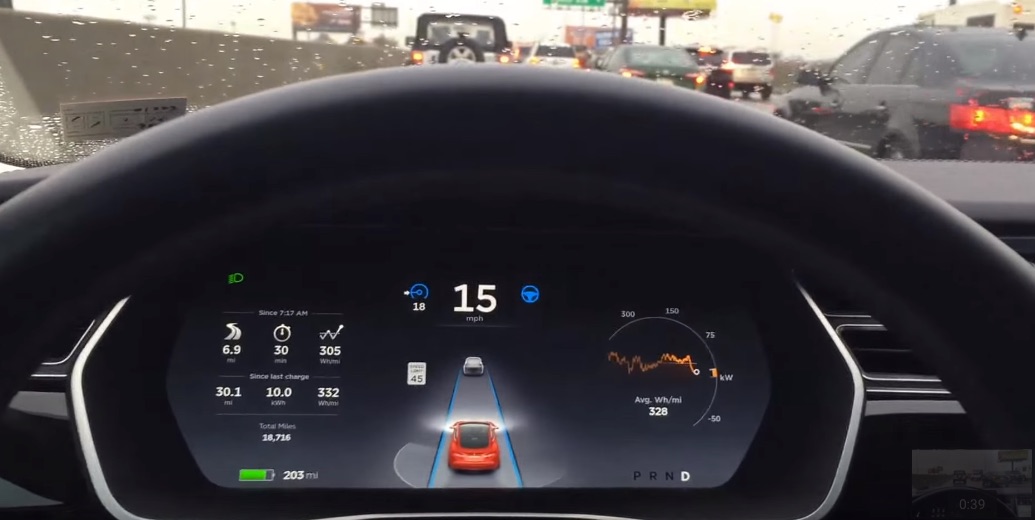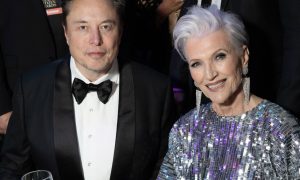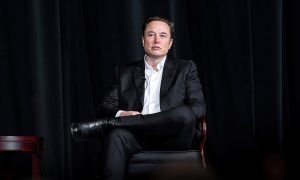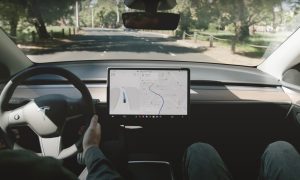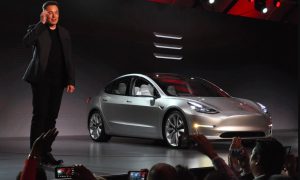
Trent Victor, senior technical leader of crash avoidance at Volvo, calls the Tesla Autopilot system “an unsupervised wannabe.” At best, he thinks it is a semi-autonomous system masquerading as an autonomous one. “It gives you the impression that it’s doing more than it is.” When it comes to Autopilot, color Trent Victor unimpressed.
Why is he so harsh in his judgment? Because he believes Autopilot conveys the impression that the driver is free to check e-mail or watch a video while the car drives itself. Victor says Volvo believes Level 3 autonomy, in which a driver needs to be ready to take over at a moment’s notice, is an unsafe solution. “Our position on autonomous driving is to keep it quite different so you know when you’re in semi-autonomous and know when you’re in unsupervised autonomous,” he says.
Tesla’s Autopilot semi-autonomous technology gives drivers the ability to take their hands off the wheel while the car effectively drives itself on the highway. Although it is the most advanced semi-autonomous system available in an automobile today, that doesn’t mean it’s a good implementation of technology, according to Victor.
Volvo plans to unveil its Drive Me autonomous car in 2017. The pilot program will feature a Level 4 autonomous car capable of driving like a Tesla on Autopilot, but it will also be able to handle any situation that arises without any human intervention. The driver won’t need to be involved at all. If something goes wrong, the car will be able to stop itself safely and park on the side of the road.
“In our concept, if you don’t take over, if you have fallen asleep or are watching a film, then we will take responsibility still,” says Victor. “We won’t just turn [autonomous mode] off. We take responsibility and we’ll be stopping the vehicle if you don’t take over.”
Victor says that Autopilot as presently configured will simply disengage if a dangerous situation is imminent. The assumption is that the driver will then resume control of the car. But if the driver is distracted, an accident can ensue before the driver realizes that human control is required.
“That’s a really important step in terms of safety, to make people understand that it’s only an option for them take over,” says Victor. Volvo is “taking responsibility both for crash events, and we’re also programming it for extreme events like people walking in the road even where they’re not supposed to be. There’s a massive amount of work put into making it handle a crash or conflict situations.”
Ultimately, the development of self driving vehicles will be as much about government regulation as it is about differences in corporate philosophy. The National Highway Transportation Safety Administration is pondering what those regulations should be. In fact, it is soliciting public comments at a hearing in Silicon Valley today.
Ford, Volvo, Uber, Lyft, and Google have formed a new consortium called The Self Driving Coalition for Safer Streets. It will lobby NHTSA for regulations its members believe will best serve their business interests. It is interesting that Tesla is not part of the coalition. No doubt, Tesla is pursuing its own lobbying campaign.
Although details are sketchy at the moment, there is little doubt that Tesla expects the self driving capabilities of the upcoming Model 3 to represent a major step forward from the Autopilot system available in its cars today. Will it be good enough to meet the objections of people like Trent Victor? We will know in about 18 months.
Source: The Verge

